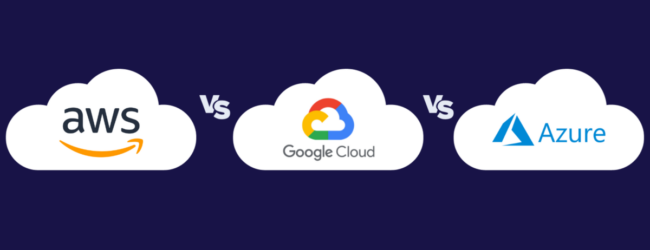
A Step-by-Step Guide to Creating an Effective Cloud Migration Strategy
Author: Maximilian Giffhorn
· 7 mins readA cloud migration strategy is crucial for organizations aiming to enhance their IT infrastructure’s scalability, performance, and disaster recovery capabilities while reducing costs. By leveraging cloud services, companies can access new technologies, improve collaboration, and ensure data protection with a streamlined cloud backup and storage system. This guide outlines essential steps towards migrating IT assets from on-premises to a cloud-based environment, emphasizing the importance of aligning the migration plan with organizational goals and conducting a thorough assessment of the current system to ensure a smooth transition.
Cloud migration, albeit offering significant benefits like cost savings and increased scalability, presents various challenges such as data security threats,application compatibility issues, and the risk of operational downtime. Organizations must carefully select the right cloud migration tools and strategies, considering factors like cloud data integration and the selection of a compatible cloud vendor to mitigate these risks. Moreover, understanding and preparing for potential obstacles will enable the development of a comprehensive cloud transition strategy, ensuring a successful cloud transformation.
Understanding the Basics of Cloud Migration
Understanding the basics of cloud migration begins with recognizing it as the process of moving a company’s digital assets, services, databases, IT resources, and applications either partially or wholly into the cloud. This strategic move is aimed at achieving real-time and updated performance and efficiency, offering benefits such as agility, faster innovation, and simplified IT management among others [1].
The cloud migration journey involves several critical steps:
- Assessment of Current Infrastructure: This initial phase includes evaluating the existing IT setup to understand what can and needs to be moved to the cloud [2].
- Choosing the Right Cloud Service Model and Provider: Deciding on an appropriate cloud service model (IaaS, PaaS, SaaS) and selecting a provider that aligns with the organization’s needs.
- Planning and Preparing for Migration: Involves defining the migration strategy, building a business case, and preparing the existing infrastructure for the transition.
- Executing the Migration: This is the actual process of moving the digital assets to the cloud, which requires careful execution to minimize downtime and ensure data integrity [2].
- Optimization Post-Migration: After the migration, it’s crucial to optimize resources and processes to fully leverage cloud benefits and achieve the desired efficiency and cost savings [2].
Cloud migration is not a one-size-fits-all process. Organizations can choose from several strategies, often referred to as the “seven R’s of migration”: Rehost, Replatform, Repurchase, Refactor, Retire, Retain, and Relocate [1]. Each strategy comes with its own set of benefits and considerations, influenced by factors such as the complexity of the existing IT environment, data sensitivity, performance requirements, and long-term business objectives.
However, the journey is fraught with challenges, including dealing with legacy applications, managing cloud complexities, and overcoming the lack of cloud skills within the organization. Security and compliance risks, along with the complexity of business and organizational changes, also pose significant barriers to reaping the full benefits of cloud migration.
The Key Phases of a Cloud Migration Journey
The cloud migration journey is a structured process that can be broken down into five key phases, each serving a specific purpose in the transition to cloud-based operations. By understanding these phases, organizations can better prepare for and execute their migration strategies effectively.
- Prepare Phase
- Objective: Establish business objectives, evaluate cloud readiness, and build a business case for each application to be migrated. This phase is critical for setting the foundation for a successful migration by ensuring alignment with the organization’s strategic goals and assessing the current IT infrastructure’s compatibility with cloud services.
- Activities:
- Evaluate current IT infrastructure
- Identify potential risks and dependencies
- Select a migration strategy based on the assessment
- Plan Phase
- Objective: Create a detailed migration plan that includes a roadmap, cloud architecture, necessary modifications, and compliance requirements. This phase focuses on the logistical aspects of the migration, ensuring that the organization has a clear understanding of the steps involved and the resources required.
- Activities:
- Define goals and objectives
- Select a cloud service provider
- Identify required resources and tools for migration
- Migrate Phase
- Objective: Move data, applications, and other workloads to the cloud using techniques such as lift-and-shift, refactoring, or rebuilding. This phase is the execution stage where the actual migration occurs, requiring careful planning and execution to minimize downtime and ensure data integrity.
- Activities:
- Configure and deploy cloud resources
- Migrate data and test applications for functionality
- Use logging and monitoring tools to ensure application performance
- Operate Phase
- Objective: Manage workloads in the cloud environment, monitoring performance, managing resources, and maintaining security and compliance. This phase involves the day-to-day management of cloud operations, ensuring that applications and data perform optimally in their new environment.
- Activities:
- Monitor and maintain the cloud environment
- Address security concerns proactively
- Ensure optimal performance of applications and data
- Optimize Phase
- Objective: Improve performance, refine cloud operations, identify cost-saving opportunities, and implement cloud-native features. This final phase focuses on continuously improving and optimizing cloud operations to maximize the benefits of cloud migration, including cost efficiency and operational agility.
- Activities:
- Monitor performance and fine-tune resources
- Implement cost-saving measures
- Adopt managed services and improve automation for reduced operational overhead
By following these phases, organizations can ensure a smooth and effective transition to cloud computing, leveraging the benefits of cloud services to achieve improved performance, agility, and cost savings.
Cloud Migration Strategies:
- Re-host (Lift and Shift): This strategy involves moving an exact copy of the current on-premise environment to a similar environment on the cloud without extensive reconfigurations or changes to the architecture.
- Re-platform: It includes making adjustments and optimizations to applications so they work better and faster in the cloud environment.
- Repurchase: Moving to a new, cloud-based product, either by abandoning current applications and replacing them with SaaS options or moving licenses from local servers to cloud-based servers.
- Re-factor/Re-architect: This involves redesigning and building applications from scratch to work in the cloud environment.
- Retire: Identifying applications and services that are no longer useful and can simply be turned off instead of being migrated to the cloud.
- Retain: For situations where migrating to the cloud isn’t feasible at the moment, companies can choose to keep their current environment and revisit the idea later.
Need Expert IT Solutions?
Get a Free Consultation Today!
Whether you’re dealing with network issues, cybersecurity concerns, or software integration, our team of IT experts is here to help. Don’t let tech troubles slow you down. Call us now for a complimentary initial assessment, or click below to fill out our quick contact form. Let’s make technology work for you.
Key Considerations for Strategy Selection:
- Assessment and Planning: Begin with a thorough evaluation of the current IT infrastructure, business processes, and user needs. Develop a detailed migration plan that includes goals, success metrics, and a cloud migration checklist to manage the scope of the project and the level of disruption to the business.
- Cloud Service Type: Decide on the type of cloud service (PaaS, IaaS, SaaS, FaaS) based on the organization’s requirements, considering factors such as scalability, cost, and the level of control needed over the environment.
- Provider Selection: Choose a cloud service provider that aligns with the organization’s needs, evaluating aspects such as pricing, security, compliance, support, and the provider’s experience in handling similar migration projects.
Solutions for Common Strategy Pitfalls:
- Lack of a Solid Plan: Ensure a well-laid, detailed plan and a cloud migration checklist are in place to effectively manage the project scope and minimize business disruption.
- Not Configuring the Right Strategy: Analyze business requirements, assess different use cases, and create a tailored cloud migration plan that addresses the organization’s unique challenges and opportunities.
By carefully considering these strategies and factors, organizations can select a cloud migration strategy that not only mitigates risks but also maximizes the benefits of cloud computing, such as improved scalability, agility, and cost savings.
Overcoming Common Cloud Migration Challenges
Overcoming common cloud migration challenges involves a strategic approach that addresses potential pitfalls head-on.
Here’s how organizations can navigate these challenges effectively:
- Data Security and Compliance Risks:
- Solution: Ensure a secure migration path within the firewall and encrypt data. Adhere to compliance standards by selecting a cloud service provider with robust security features and a proven track record in platform security. Implement Security as a Service (SECaaS) to enhance data privacy and network security.
- Cost Management and Optimization:
- Solution:
- Planning: Work closely with service providers to understand all potential costs, including hidden ones. Utilize cloud migration planning tools for accurate budgeting.
- Visibility: Gain insight into IT infrastructure usage and cloud provider policies. Proper planning and understanding of cloud needs can optimize infrastructure and reduce expenses.
- Solution:
- Technical and Operational Challenges:
- Skill Gap: Partner with experienced cloud migration companies or hire new talent to fill IT positions. Building a DevOps culture and providing training can also mitigate this challenge.
- Migration Complexities and Compatibility Issues: Conduct a thorough assessment of the current infrastructure to identify compatibility issues or dependencies. Use a phased strategy for moving components to the cloud, minimizing disruptions.
- Application Performance and Network Bandwidth: Analyze application performance against predictive demand. Factor in network constraints before migration with the help of network technology modeling tools.
- Organizational and Cultural Readiness:
- Solution: Develop a comprehensive change management plan that includes training for employees on new cloud environments and tools. This plan should be implemented before, during, and after the migration to ease the transition and foster enterprise-wide buy-in.
By addressing these challenges with specific, actionable solutions, organizations can ensure a smoother transition to the cloud, leveraging its full potential for improved scalability, agility, and cost savings.
Leveraging Tools and Technologies for Effective Migration
To facilitate an efficient and secure cloud migration process, leveraging the right tools and technologies is paramount. These tools not only simplify the migration but also ensure minimal disruption, enabling organizations to maintain continuity in their operations.
Below is a detailed overview of some pivotal tools and technologies across major cloud service providers:
- Amazon Web Services (AWS)
- CloudEndure Migration: Facilitates seamless migration with minimal downtime.
- AWS VM Import/Export: Allows easy import/export of virtual machine images.
- AWS Database Migration Service: Simplifies the migration of databases to AWS.
- AWS Application Migration Service: Supports migration from any source infrastructure, including on-premises and other clouds, with options for application modernization.
- Microsoft Azure
- Azure Migrate: Offers integrated tools for assessment, migration, and optimization of servers, databases, web applications, and virtual desktops. It also provides continuous monitoring and optimization post-migration [3].
- Azure Site Recovery: Ensures business continuity by keeping workloads available during disruptions [3].
- Azure Database Migration Service & Azure Data Box: Streamline the migration of large volumes of data to Azure.
- Google Cloud Platform (GCP)
- Google CloudSQL & Google Cloud Migration Tools: Include comprehensive services for migrating VMs, data, databases, and physical servers to Google Cloud. Specialized services like Storage Transfer Service and Database Migration Service cater to specific migration needs.
- Additional Tools
- NetApp Cloud Volumes ONTAP: Offers data management solutions with features like data protection and cost optimization.
- Cribl Suite (Stream, Edge, Search, Cloud): Provides a versatile observability pipeline for managing data across various sources and destinations, enhancing the migration process.
- AppDynamics (Cisco): Delivers insights into application performance, aiding in the monitoring and optimization of cloud-based applications [4].
- CAST Highlight & CloudFuze X-Change: Assist in assessing cloud readiness and transferring cloud data, including user accounts and permissions, respectively.
These tools and technologies offer tailored solutions for different stages of the cloud migration journey, from initial assessment and planning to execution, monitoring, and optimization. By selecting the appropriate tools, organizations can ensure a smooth transition to the cloud, achieving their desired outcomes in terms of performance, cost-efficiency, and scalability.
Conclusion
Navigating the labyrinth of cloud migration requires a solid understanding of strategies, challenges, and the right technological tools. The insights shared throughout this guide unravel the complexities of transitioning to the cloud, emphasizing the importance of a well-crafted migration plan aligned with organizational goals. Such meticulous preparation not only paves the way for a seamless shift but also optimizes the operational, cost, and scalability benefits derived from cloud computing. With a comprehensive approach, businesses can overcome the hurdles of data security, compliance, and technical compatibility, ensuring a successful migration that propels them towards digital transformation.
The journey towards cloud efficiency teems with potential pitfalls and opportunities alike, necessitating expert guidance to navigate its nuances. For those embarking on this transformative path, a partner experienced in tailoring strategies to specific business contexts can make all the difference. If you need advice for your strategy or wish to explore how to harness the full potential of cloud computing for your organization, contact us. Together, we can unlock the approaches best suited to your business needs, ensuring your cloud migration journey is not just successful but also accelerates your path towards achieving the desired digital agility and innovation.
References
[1] –https://www.accenture.com/us-en/insights/cloud-migration-index
[2] –https://www.linkedin.com/pulse/step-by-step-guide-successful-cloud-migration-strategy-vb5uf
[3] –https://azure.microsoft.com/en-us/resources/cloud-computing-dictionary/what-is-cloud-migration
[4] –https://www.linkedin.com/pulse/ultimate-guide-cloud-data-migration-tools-wasabitechnologies-8rywe
[5] –https://cloud.google.com/blog/products/cloud-migration/planning-a-multi-year-data-center-migration
[6] –https://cloud.google.com/learn/cloud-migration





Share